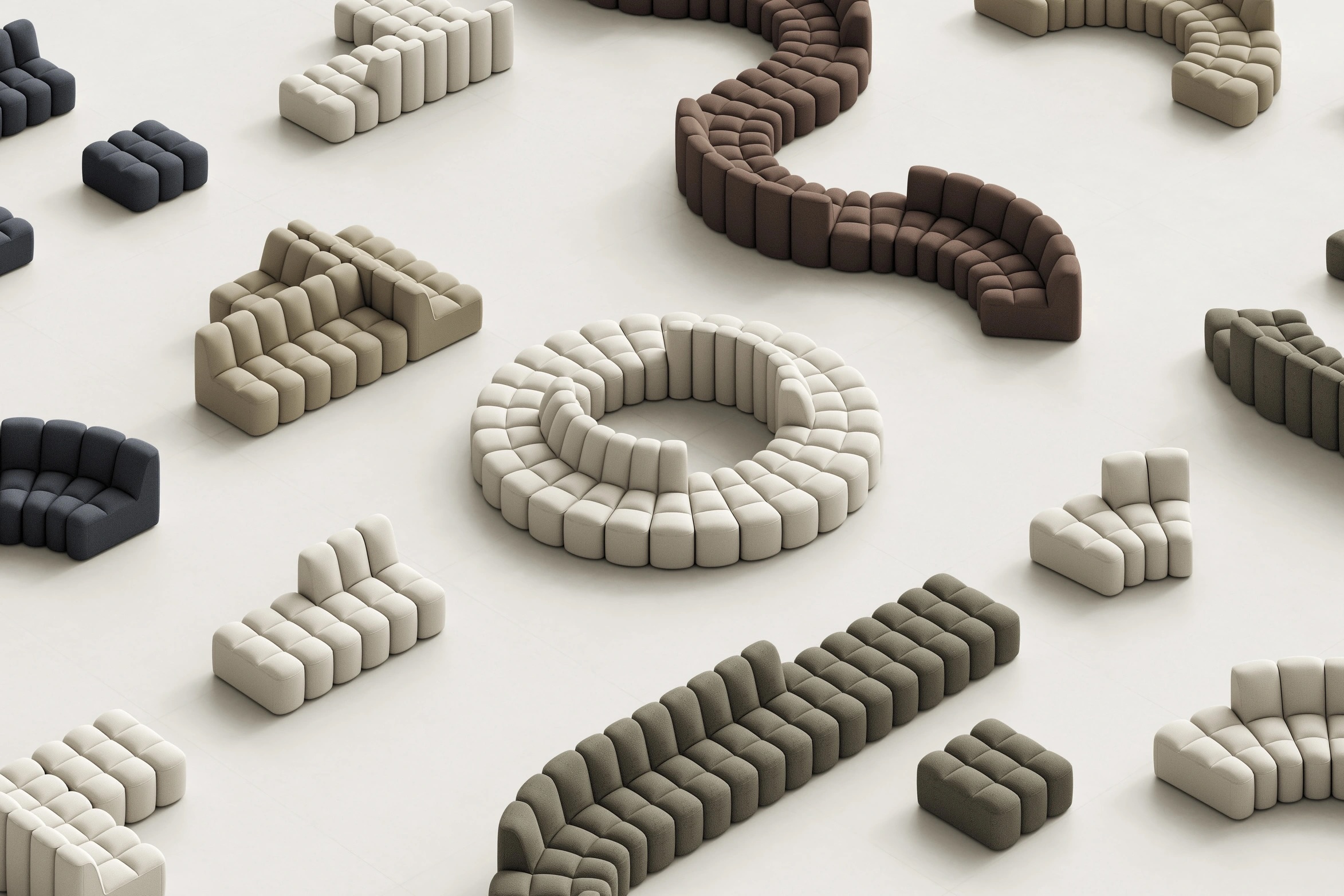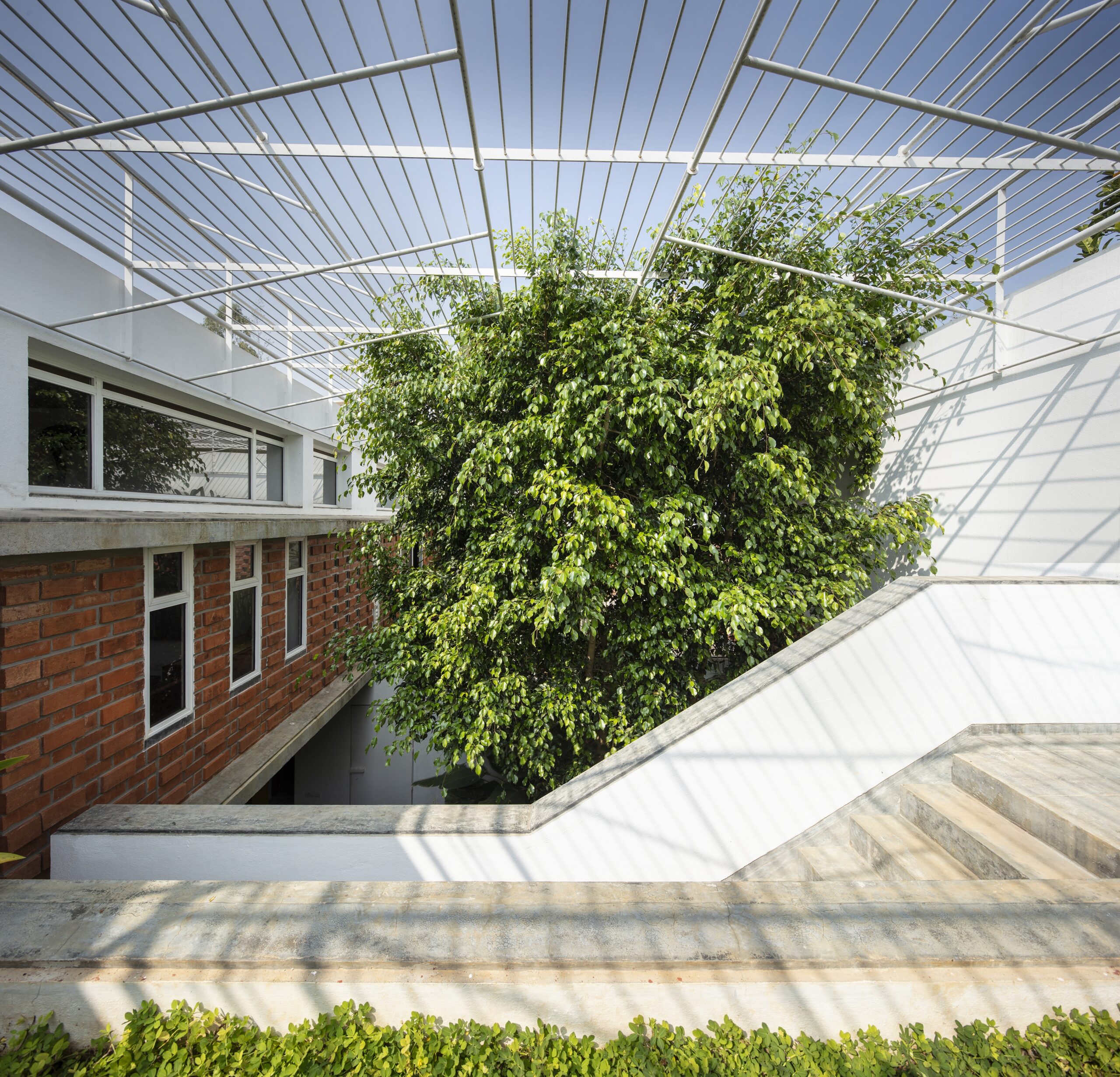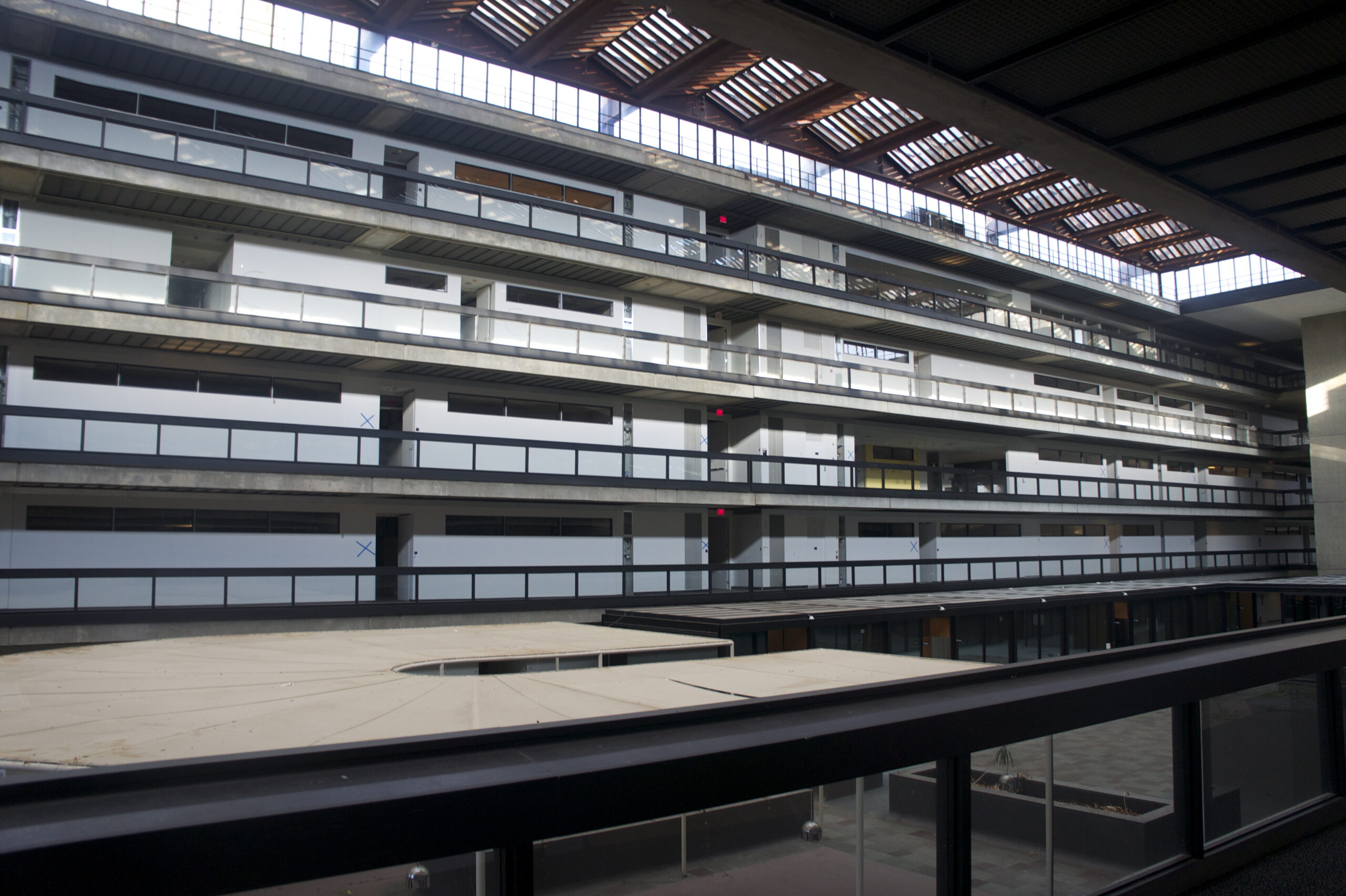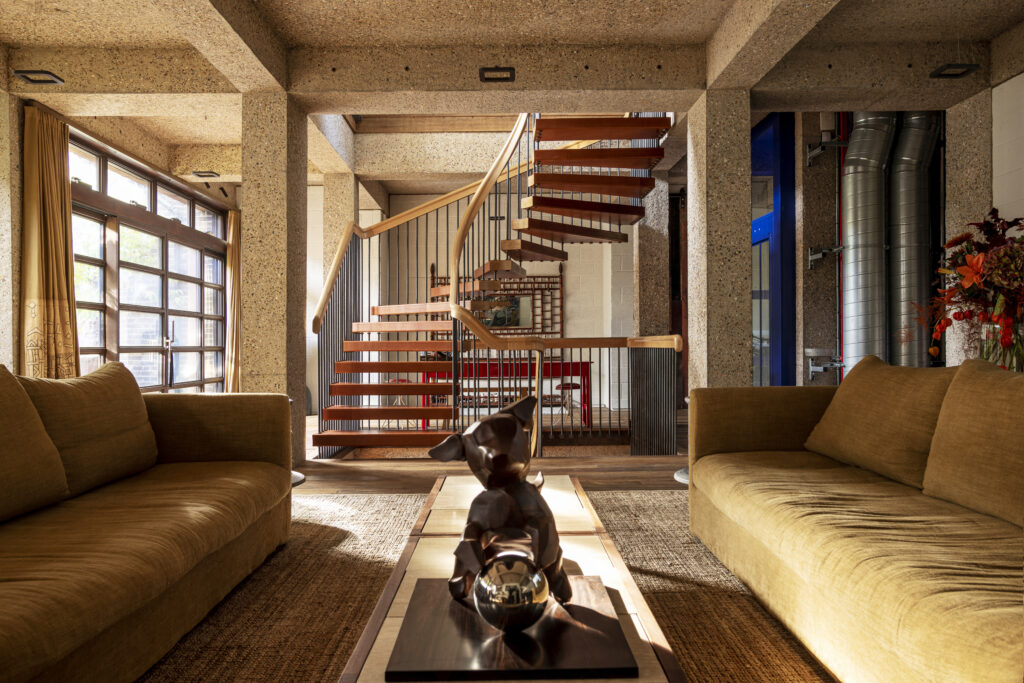Monotony by Design: The Posthuman Architecture of Severence

Architects: Want to have your project featured? Showcase your work by uploading projects to Architizer and sign up for our inspirational newsletters.
When the second season of Dan Erickson’s nightmarishly corporate and, sadly, not too far-fetched smash hit series was launching on Apple TV, an IRL promotional stunt grabbed almost as many headlines as the trailers for the show. If you missed it, here’s the recap.
The team behind Severance, or rather the team responsible for marketing content for its home streaming platform, set out a ‘pop-up’ set in New York City’s Grand Central Station. The idea was to recreate the iconic interior of the Lumon Industries office, where most of the on-screen action takes place. Stars from the show went about their day-to-day duties as their characters, while commuters rushed for services out of one of the busiest railway stations in North America.
In so far as guerrilla-style promo goes, it’s hard not to be impressed. The budget for this single day alone must have been immense, but the concept itself is also a work of art which perfectly emphasizes the atmosphere and idea of the show. While the world outside the horrendously identity-less workspace continues as normal — whatever normal is — those in the employ of the secretive mega-company are essentially kept in solitary confinement, but every movement is observed.
It’s this juxtaposition of the calm, sterile and clinical with the chaos of being a human that really leaves the lasting trauma after Severance concludes. If you could escape your job, by dividing your psyche and your memory in two, leaving the conscience your were born with free to enjoy a life unaffected by mundane duties in exchange for money, would you? More importantly, if this meant holding a totally different person prisoner at work — albeit someone who share a physical self with — knowing that they would eventually be driven to mental anguish and depression, could you?
On the face of it, Severance has very little to do with architecture. But this is more a sign of one of modern architecture’s greatest deceits. Watching 19 episodes about people doing administrative work, many of which are dominated by scenes set in the same dry room, is at times aesthetically tortuous. Yet we don’t feel the same walking through the streets of our towns, cities and mega-cities which have been overwhelmed by increasing gigantic production line structures. This isn’t to say all contemporary monoliths are unimaginative, but whether commercial, industrial or residential, the devil lies in the detail. And the sin very much in the lack thereof.
When the characters and audience are allowed out of Lumon’s interior, settings are truly jarring. The exterior of the company’s headquarters, in real life Bell Works in Holmdel, New Jersey, almost feels like it should belong to the Empire in Star Wars. Vast, unfathomably vast, it is so far behind the human scale it takes on the resemblance of a postmodern beehive for people. Drones buzzing in and out of doorways, up and downs stairwells. Being dwarfed by a location doesn’t even come close. When we move to the home of Mark’s ‘outie’ — the half of him that does not have to remember the pain of employment — things almost feel darker. Or at least more insidious.
Baird Cree Manor, the fictitious housing estate, is actually The Village Gate Townhouses in Nyack, New York. For all intents and purposes, it could probably be anywhere in the world — albeit this particular version of cookie cutter is distantly anywhere in North America. In many ways, it calls to mind the film Vivarium, a claustrophobic surrealist piece where protagonists in unable to escape their nebula residential development. Not least as in Severance we’re told many of the homes in the area were “never filled up.”But let’s not digress.
Ultimately, the point is that Mark’s carbon copy domicile is, when all is said and done, not a million miles away from the narcolepsy-inducing repetition of the interior walls he so desperately wants to avoid being exposed to back at Lumen. A delicious irony that speaks to our era perfectly — we all want to escape the flock, and yet we are increasingly unable to avoid acting like sheep in one way or another.
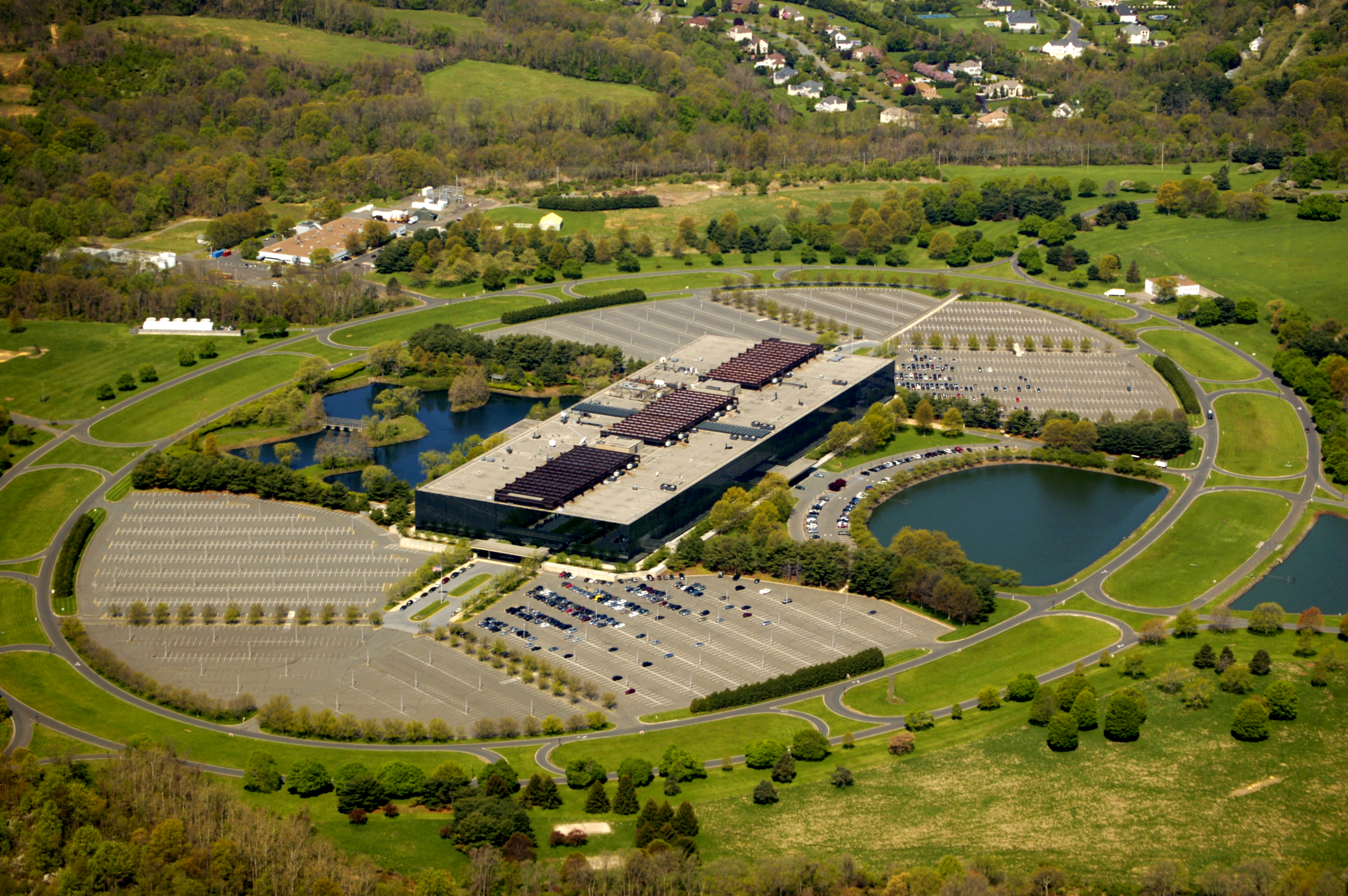
Derivative work: MBisanz talk Bell_Labs_Holmdel,_The_Oval2.png: *derivative work: MBisanz talk Bell_Labs_Holmdel,_The_Oval.jpg: Lee Beaumont, Bell Labs Holmdel, CC BY-SA 2.0
There are, of course, contrasts. A scene in Pip’s Bar and Grille is an ode to small town America that time is rapidly running away from. It’s a more intimate and personal setting, true. But the sad reality is many of these places have now either been left to the ravages of economic collapse due to urbanization, or overtaken by the wealthy in their clamor to remove themselves from a rat race answering questions like housing crisis and overcrowding with thoughtless and rushed architecture.
Devon and Ricken, respectively the sister of Mark and her author husband, are at once part of the Lumen nightmare and yet visible, and situationally, removed from it. Let’s not dwell on the nuances, but their home is indicative of this. A stunning period manor with stacks of personality, wooden accents, AKA The Bier House in Thornwood, Pleasantville, New York, designed by Kanji Domoto (a student of Lloyd Wright). A couple who have the privilege, or so it seems, of not having to commit to the role of worker drones. Their societal positions mean they are deserving of this individual property.
These are, of course, relatively straightforward point to make for anyone who has studied cinema and misé en scene. But just as cliches are cliches for a reason, the choice of places in Severance, and their relevance to people, is highly effective. And our decision to reference them here only accentuates that point. It’s so obvious any article looking at the architecture of the show would be remiss not to focus here to begin with. Anything else is at risk of missing the point.
It’s important to note here, this article was written in a garden of equal size to its neighbors, in a South Manchester suburb that was planned in the late-1930s. Another place where each address is primarily differentiated by the choice of render, vehicle parked outside and choice of blinds or curtain. It’s lovely, and happy home. Or it will be once the alcove shelving is finished after two joiners and six months.
And that’s the most chilling part of all this. While Severance sets itself in an an imagined past-future — there’s a distinctly 1980s flavor — while the technology involved in separating oneself is, thankfully, still some time off. Nevertheless, the reality of prison-like workspaces, identikit homes for those lucky enough to have one, and the statement piles of those in the small minority who do not have to abide by the same laws of this self-made jungle, are bang-on accurate.
Earlier this year, the CEO of Suno AI — one of several generative music platforms embroiled in a law suit with major labels over copyright infringement and scraping data to train models — claimed people no longer enjoy making music — arguably the most human of all communication forms and arts, certainly the most universal. Statements like this emphasize an increasing tension between conformity and mass production in the name of efficiency, and the fundamental human desire to explore, create, make new and feel acknowledged as individuals. Seen in this light, Severance is an urgent warning about the perils of a world taken over by unfeeling corporations, and a red flag for architecture that reflects this slide into bland dystopia.
Architects: Want to have your project featured? Showcase your work by uploading projects to Architizer and sign up for our inspirational newsletters.
Top image: Jeff Keyzer, Bell Labs Holmdel during repurposing to Bell Works, CC BY-SA 2.0
The post Monotony by Design: The Posthuman Architecture of Severence appeared first on Journal.




















